Between eight and four thousand years ago what later became Ohio experienced a prolonged drought. This allowed the drought-tolerant plants of the Great Plains to displace Ohio’s more typical, water-loving plants. This eastward thrust of the prairie into Ohio has been referred to as a “prairie peninsula.” The prairie peninsula encompassed nearly 400 square miles of the Darby Plains in western, central Ohio. Today only 1% of this prairie survives. There are a number of MetroParks in the Columbus and Toledo areas that are preserving hundreds of acres of prairie, plus there are several dozens of acres of prairie in Adams County. However there are also tiny patches of prairie that range between 7 acres to a mere half-acre in size. Most of these tiny prairie openings have become part of Ohio’s state nature preserve system. One such prairie remnant can be viewed at the Milford Prairie Center State Nature Preserve.
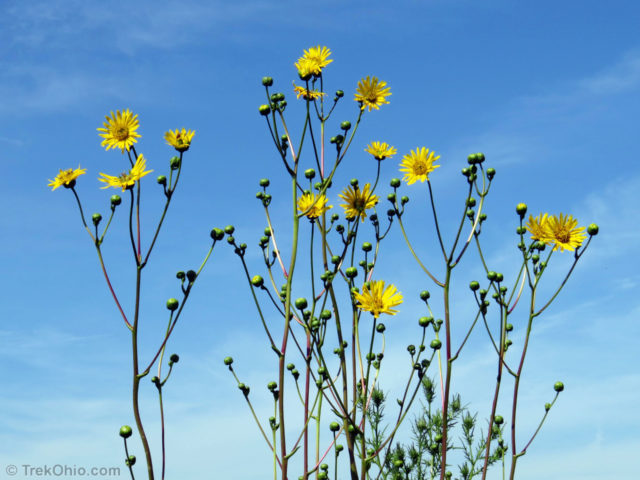
If nature was left to its own course over the thousands of years since the prolonged drought ended, the prairie plants should have been displaced by the region’s moisture-loving plants. However, Native Americans artificially extended the prairie peninsula’s life through their land management practice of setting it on fire at regular intervals. Once settlers of European-stock displaced the Native Americans, this land management practice ceased. Without regular fires, the prairies would have gradually disappeared from Ohio. By all rights, no prairies should exist east of the Mississippi because it rains too much, and with sufficient rain, our moisture-loving plants can out-compete prairie plants. However instead of a centuries-long reversion to Ohio’s typical flora, the prairies all but disappeared in the blink-of-an-eye after John Deere’s invention of the chisel plow enabled Ohio’s settlers to farm the prairies.
So how did the prairie remnant at Milford Prairie Center escape the plow? It turns out that the Milford Prairie Center had once been part of the right-of-way of a railroad that passed through the Darby Plains. Once the railroad ceased operating, the property was further protected from cultivation by a utility company that acquired the property and installed power lines over the old railway bed. Given the manner in which this prairie remnant was preserved, this nature preserve is only as wide as the utility right-of-way. Just seven acres in size, the trail at the preserve is a level, straight path under the power lines that stretches a mere 1.5 miles, making for a round-trip hike of 3 miles. The narrowness of the preserve allows hikers to view of the cornfields that surround the preserve.
The Trail
The preserve is located on Connor Road just west of the intersection of this road and OH-4. The preserve is on a narrow strip of land under the powerlines between corn fields. Guests park in the grass near the entrance.
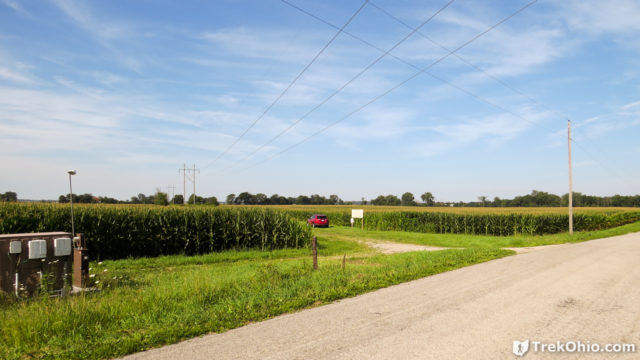
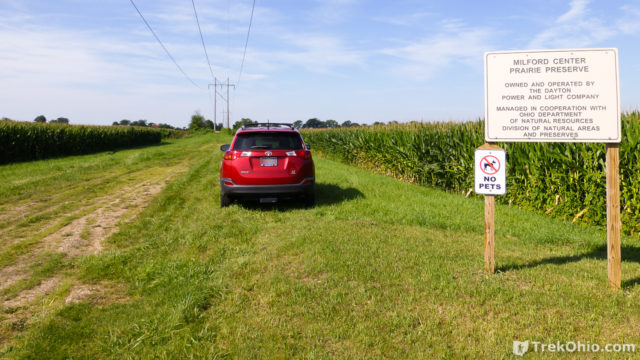
Shortly after heading down the trail, there is a footbridge that takes hikers across Treacle Creek.
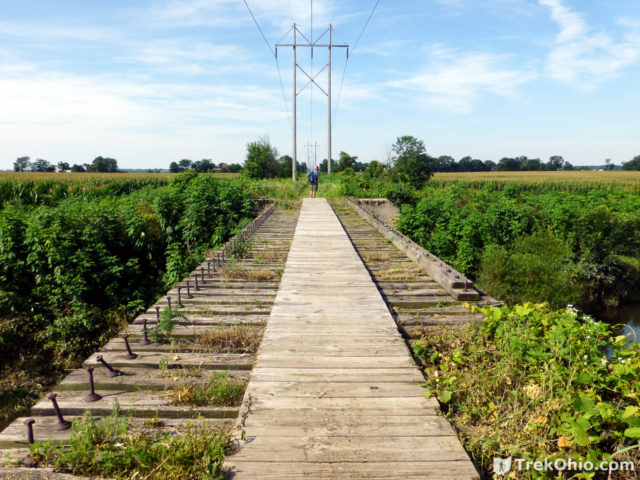
A glance down the creek makes it clear that you are in an agricultural region.
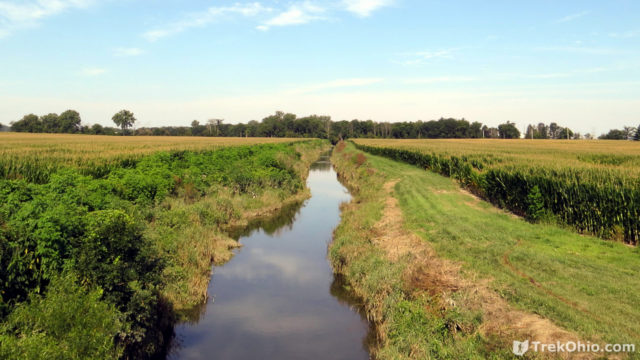
Although there are some trees in the preserve, they don’t provide any shade since they are some distance from the trail. The best time to go is in summer, so you can enjoy the flowers. Because there is no shelter from the sun, a hat and/or sunscreen is strongly recommended.
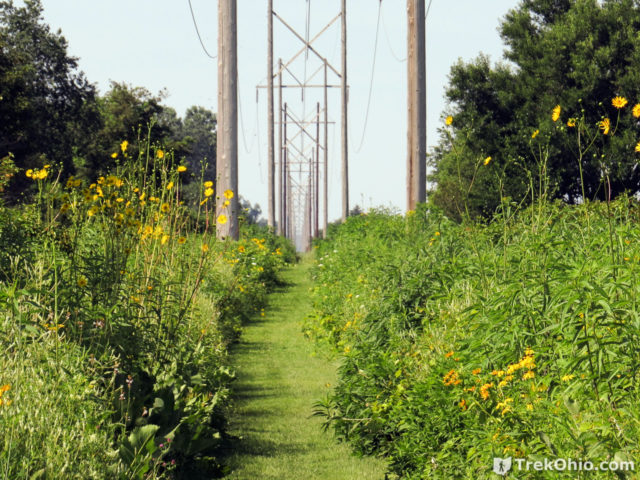
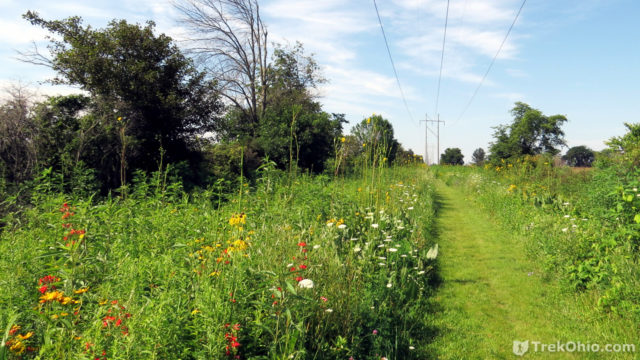
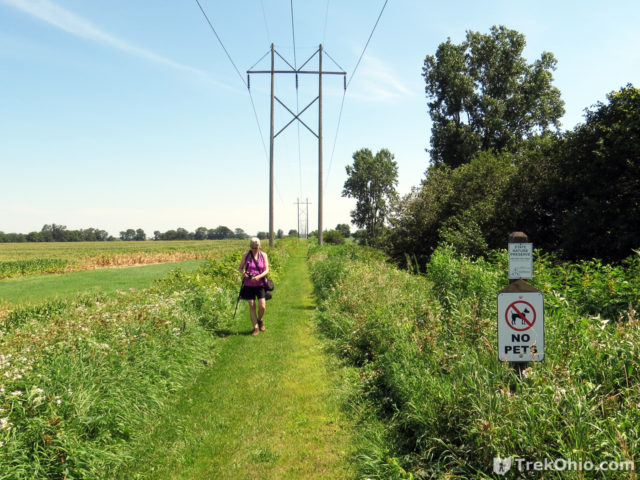
The trail intersects with OH-4. Beyond OH-4 the trail goes on for such a short distance that we didn’t bother crossing the road. The trail itself terminated at a sort of make-shift barricade. To the right of trail on OH-4 we noted that there is pull-off. The signs near the pull-off just state the names of the road and make no reference to the preserve.
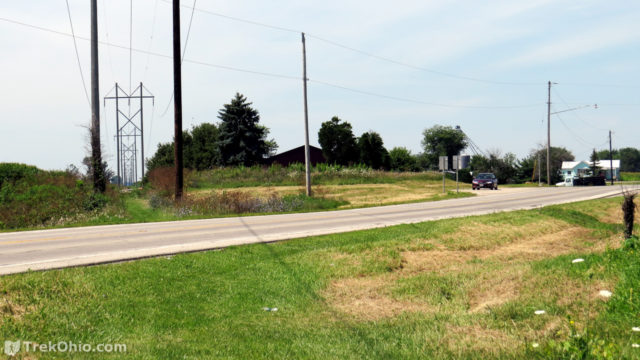
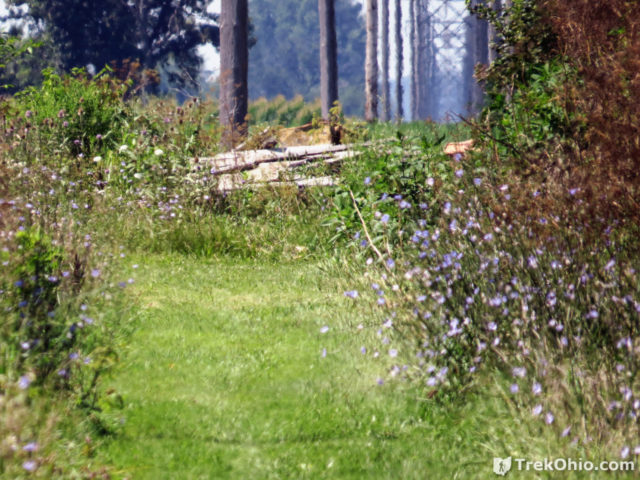
Flowers
The flowers were really beautiful this time of year and included both prairie plants and plants that are more widely found in Ohio’s fields and meadows. I’ll begin with the flower known as the royal catchfly. Although the flowers resemble the more common fire pink, you can distinguish the two because fire pink has a notch on the tip of each petal, while there is no such notch on royal catchfly. Royal catchfly is only found growing in areas that were once prairie.
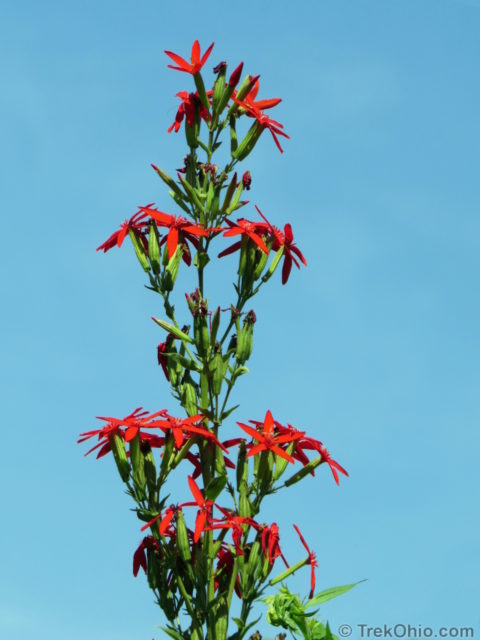
Another favorite prairie plant is the prairie dock. The plant can grow up to 10 feet tall.
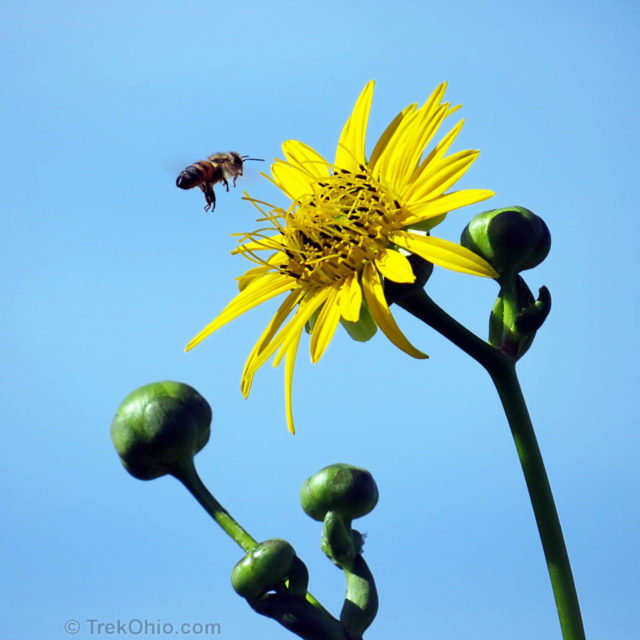
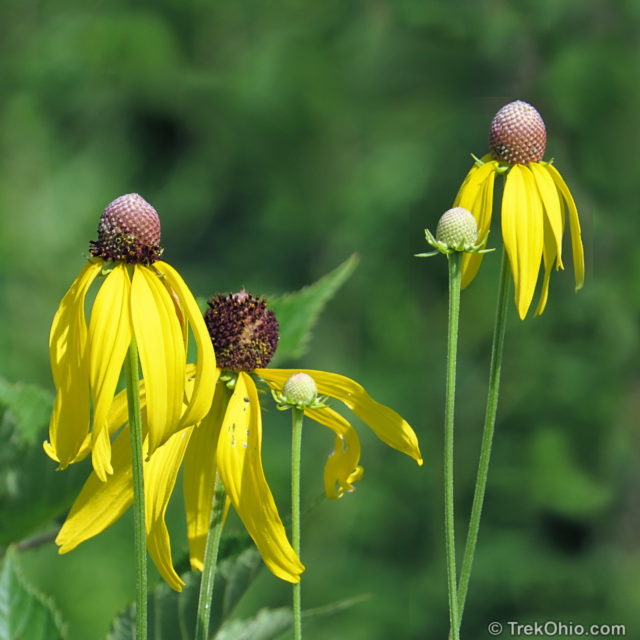
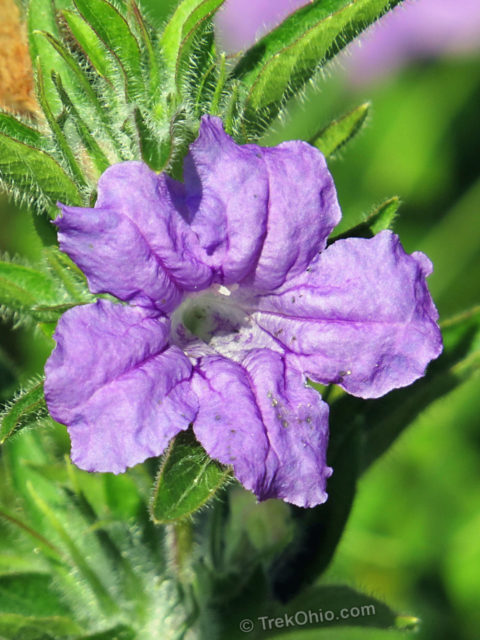
The flower below, wingstem, is fairly common in Ohio’s fields and meadows. It gets its name because there is a green membrane edging the stem: its wings.
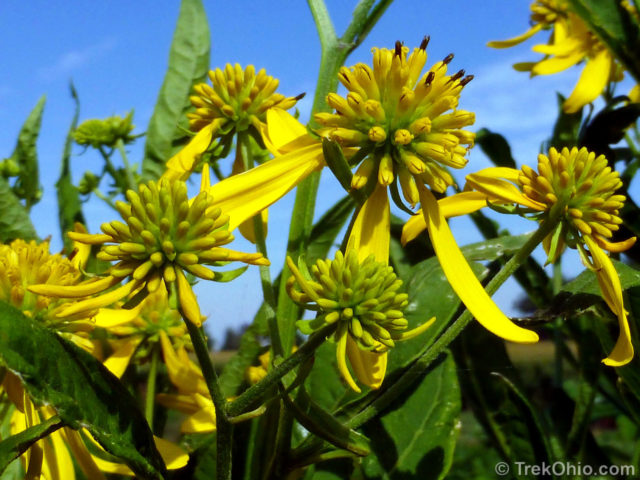
The flowering onion below is a prairie plant, but it is also found more widely in Ohio.
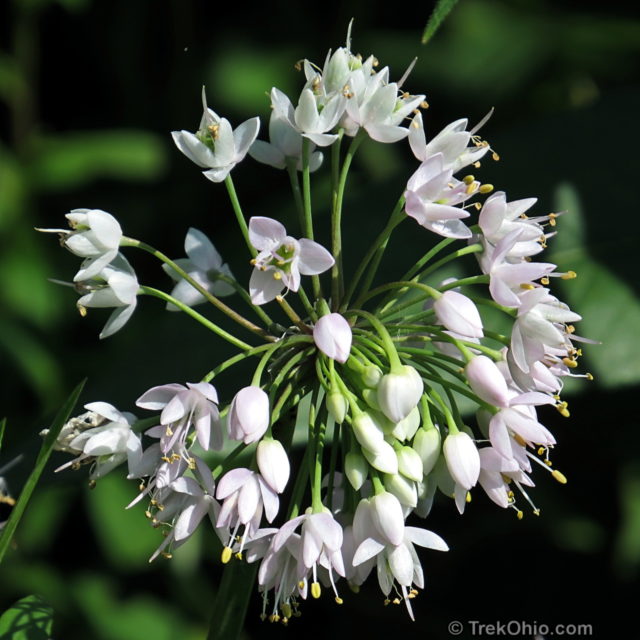
Tick Trefoil can be found fairly widely in Ohio.
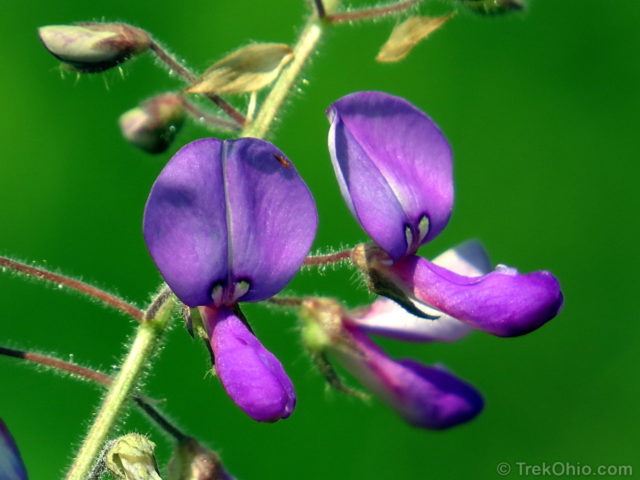
The plant below is also a beautiful, prairie plant.
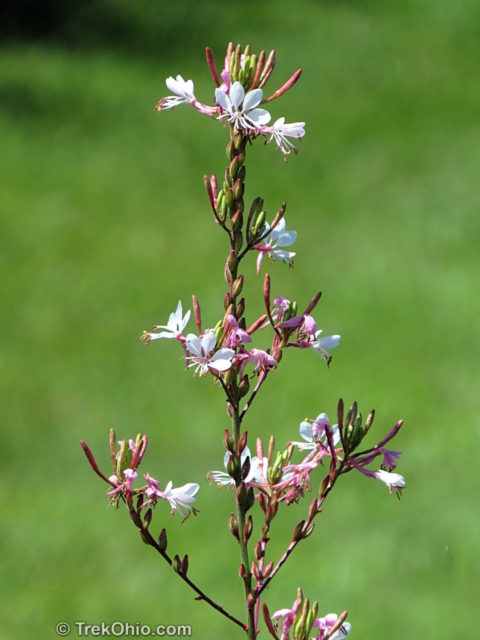
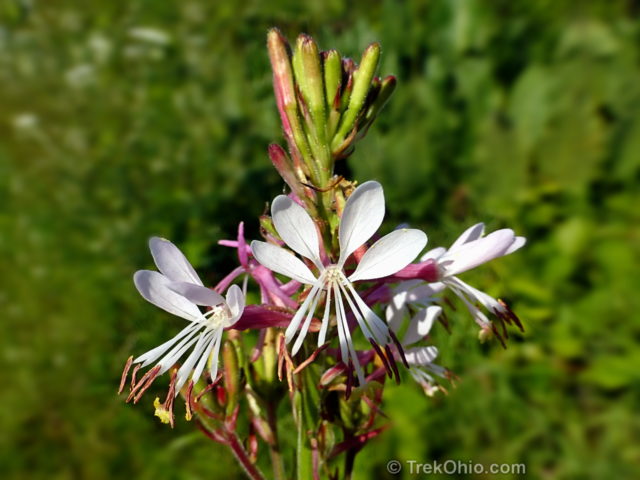
Centaurium is not a prairie plant. This tiny, little thing was growing in the grass of the trail.
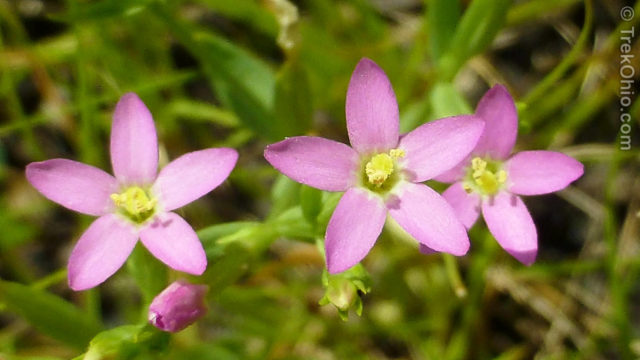
Although Queen Anne’s lace is not a native, North American plant, it is naturalized which means that it is well adapted to life here, and it can be found everywhere in Ohio now.
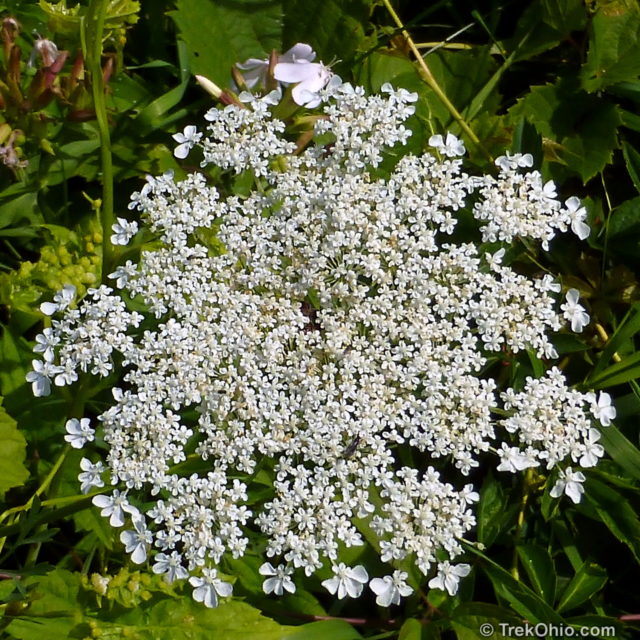
Common mullein is a weedy plant that thrives when in open, well lit areas. It is also found in areas with disturbed soil, growing up to six feet tall.
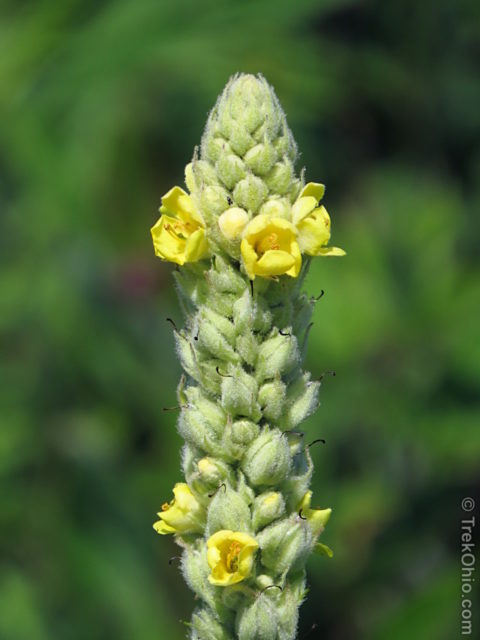
Wild bergamot is another prairie plant, and it is quite popular with hummingbird moths.
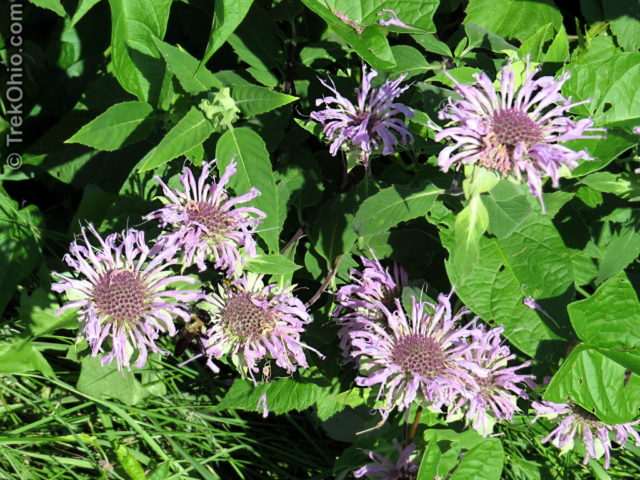
White sweet clover and soapwort are not strictly prairie plants and can be found all over the state.
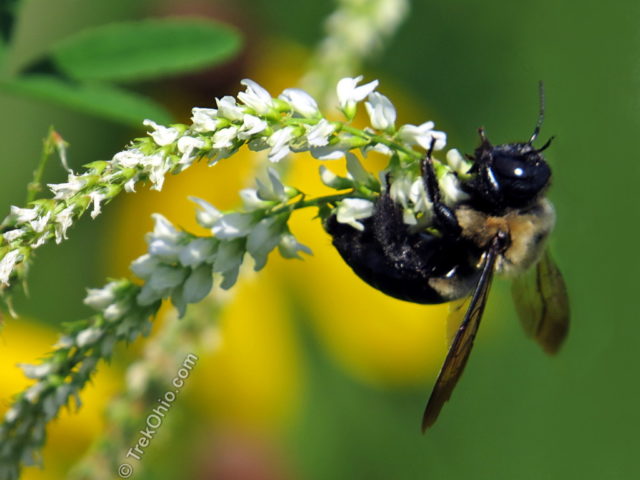
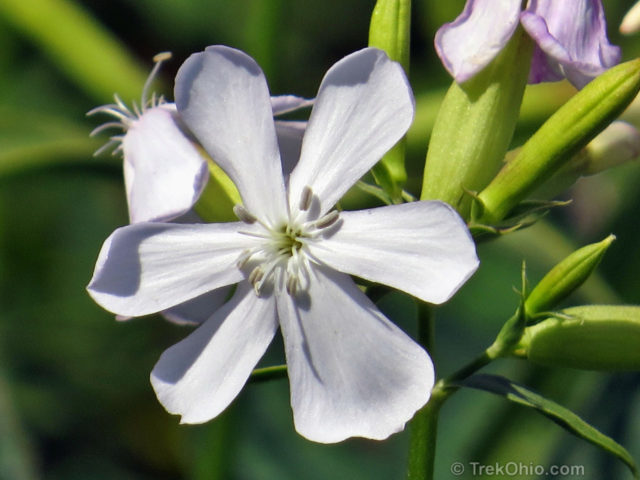
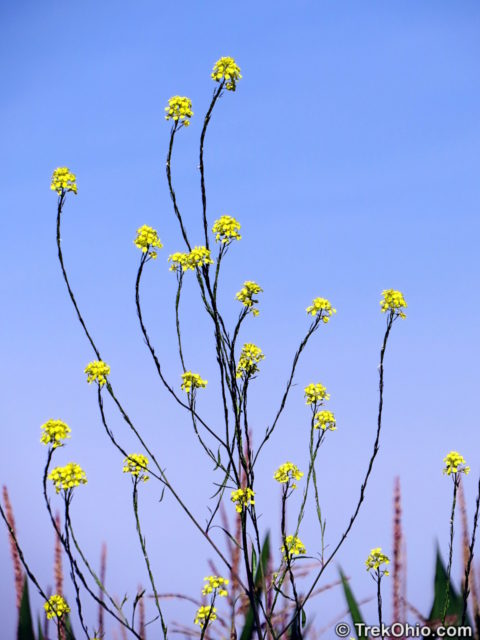
Deptford pink is a small flower that can be found widely in Ohio.
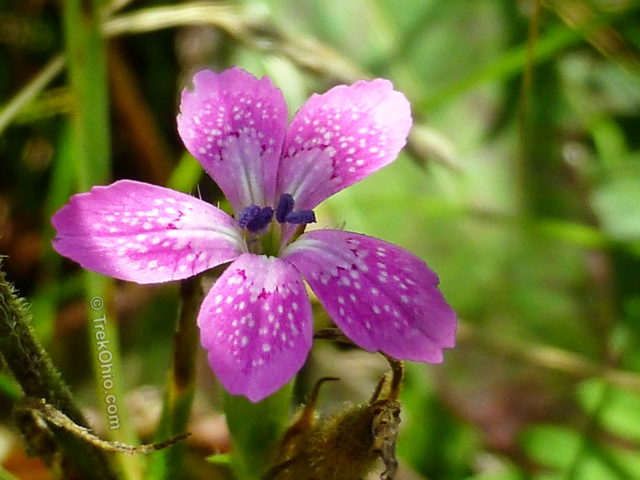
The following two plants are not strictly prairie plants, but they are interesting. Hedge Bindweed is a member of the morning glory family; it is a poisonous plant. The one below it, wild potato vine, looks similar but it was an important source of food for Native Americans. Note that unlike Hedge Bindweed, Wild potato vine has a purple center.
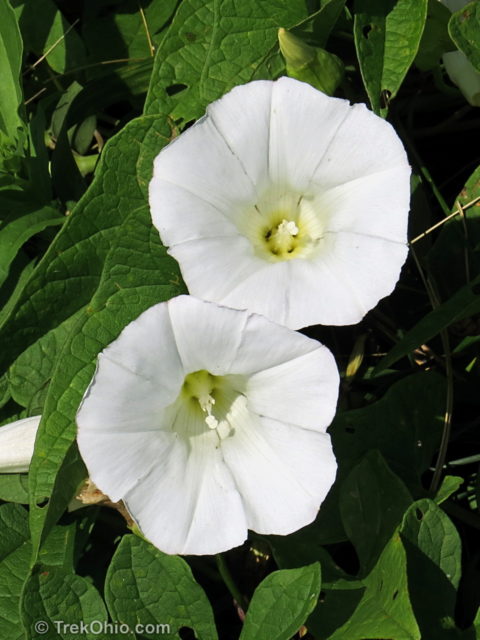
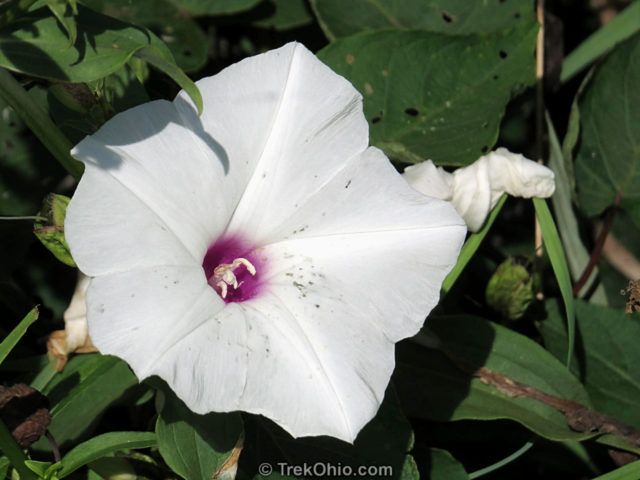
Spiderwort is also found widely in Ohio.
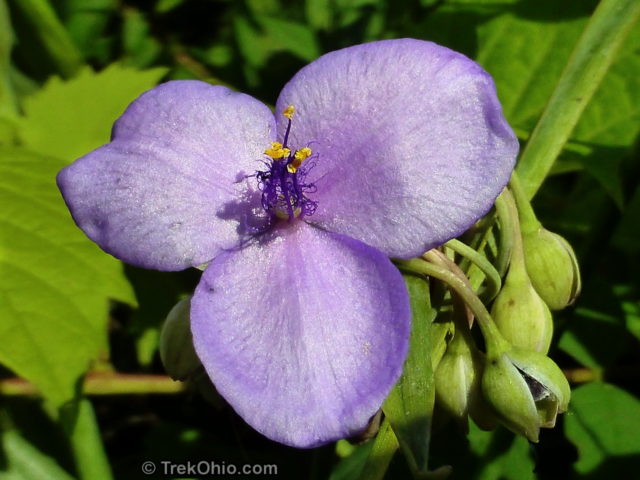
Indian hemp is not strictly a prairie plant; however, Native Americans made use of the fiber in its bark to make clothing, twine, nets, etc. It was especially good for fishing line because the fiber doesn’t stretch or weaken when wet.
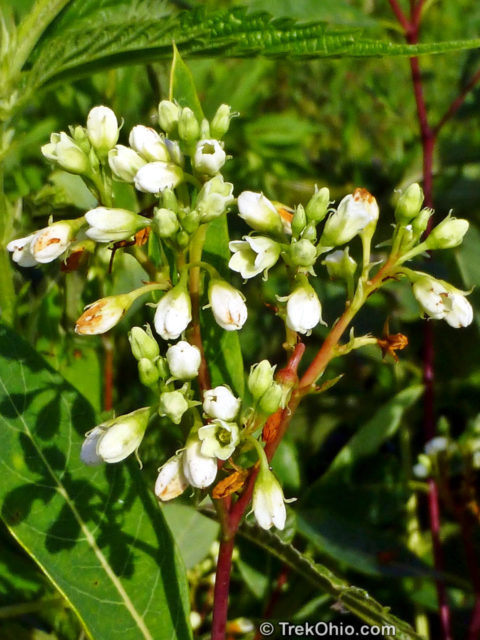
St. Johnswort and Common hedge nettle are also found widely in Ohio.

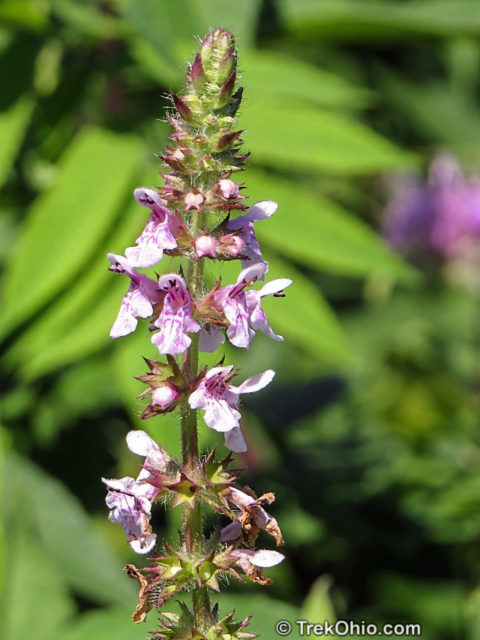
Since the number of monarch butterflies have been plummeting, it’s always nice to see one.
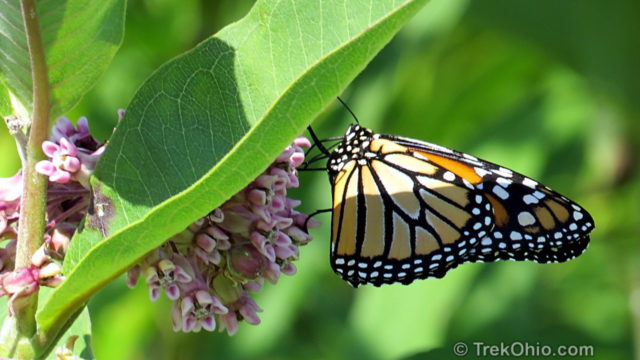
Flowering spurge is another prairie plant, though quite small.
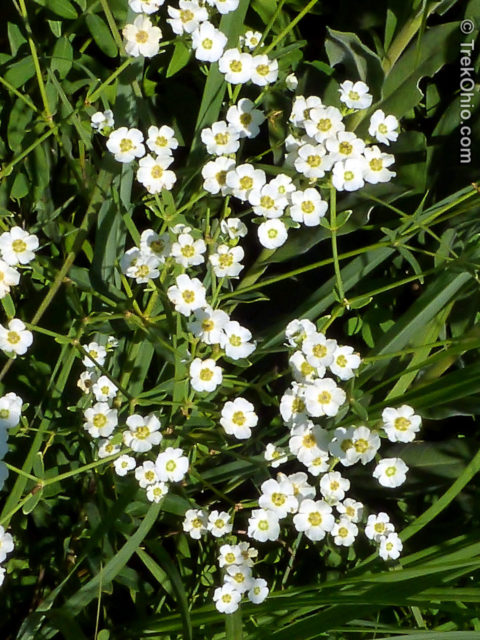
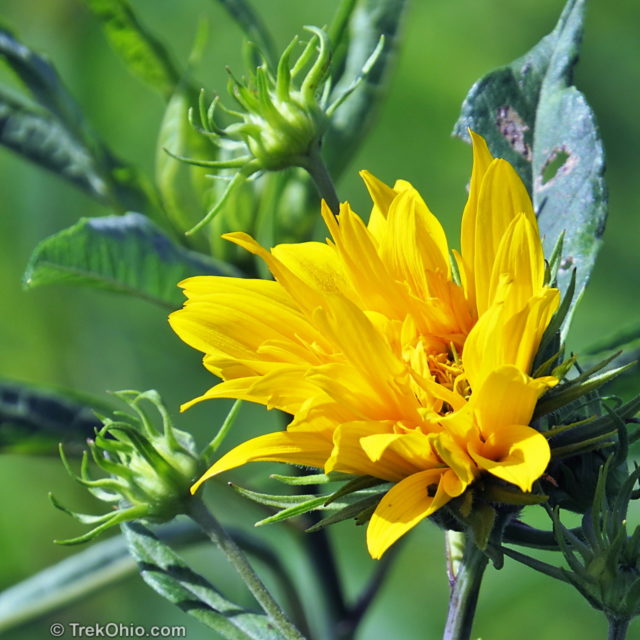
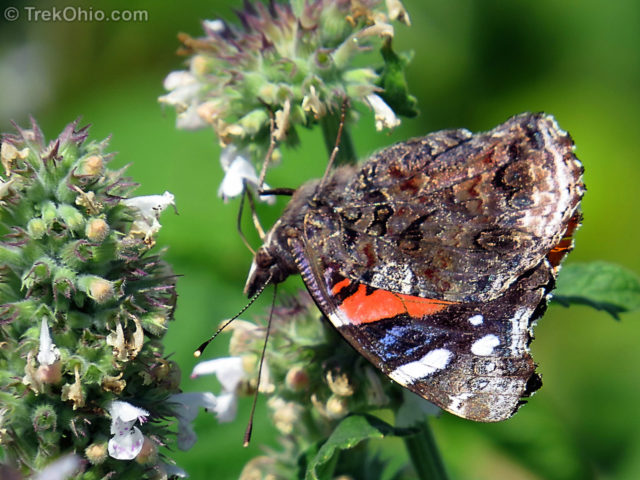
We visited the preserve on July 25th, a time when prairie flowers included red, purple, yellow, and white blossoms. The red and purple flowers gradually disappear as August wears on leaving mostly yellow flowers as August comes to a close. Although Ohio’s prairie’s also contain unique grasses, I refer you to Andrew Gibson’s excellent post on The Last Vestiges of the Darby Plains for more information on grasses; his article also includes information on some prairie flowers that I didn’t spot during our visit
Additional information
- TrekOhio: Union County Parks & Nature Preserves — This is the county in which Milford Center Prairie is located; check it out for links to the official site and for information on nearby parks and preservers.
- Ohio Prairie Association: Ohio Prairie Plant Species Information — I used this page to determine which of the flowers that I was seeing in the preserve were truly prairie plants.
- Ohio Prairie Association: Milford Center Prairie State Nature Preserve
- Ohio Scenic Byways: Big Darby Plains
- Buckeye Botanist: The Last Vestiges of the Darby Plains
- Jim McCormac: A trip to the prairies (or what’s left of them)
- The Columbus Dispatch: Small pieces of once-vast prairie thrive in Ohio
- Wikipedia: Apocynum cannabinum — this is the scientific name for Indian hemp; the Wikipedia page describes how Native Americans made use of the plant.
Location
- Address: Google Maps suggests an approximate address of 22390 Connor Rd., Milford Center, Ohio 43045
- Directions: The preserve is on Connor Road just west of the intersection of Connor Road & OH-4. It is approximately 2.5 miles south of Milford Center on OH-4.
- GPS Coordinates: 40.157818, -83.457245
- Google Maps: View on map or get directions
GPS Trace of Hike
The red line shows our hike on the trail. We started and ended at the point indicated by the markers at the upper, right end of the red line. If you’d like to directly view the GPS trace on Google Maps, click here.
More on Ohio's Prairies
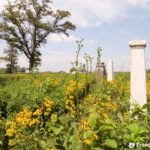
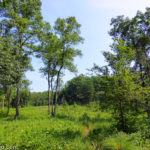
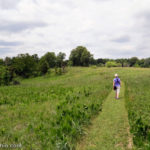
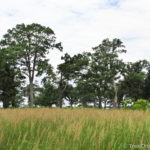
Fascinating read, so much info to take in. Sensational photos as always, especially enjoyed the yellow flowers against the blue sky – a winning combination. 😀
Becky, thank you for your kind words! We had a lovely day there… couldn’t have asked for better weather.
I love your TrekOhio! Many a weekend has found the Denes family checking out the latest location. Our favorite places are those little niches all over the state that are not the popular destination. So much to see!
Thank you
Emily, it really pleases us that you’ve been enjoying our posts. We always hoped that our site might introduce people to new, interesting places in Ohio. Thanks so much for writing!
I had no idea there were prairies in Ohio… Great photos and information, as always!
Karen, thank you! I lived in Ohio many years before I realized that prairie had once extended into Ohio.
Outstanding photos and information!
Thanks for your wonderful posts!
Ron, your welcome! Thank you for your kind and encouraging words. 🙂